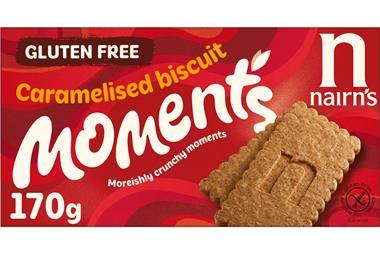
As the cost of living crisis continues to impact the nation’s purses, and challenging trading conditions are forecast to last into the year ahead, the pressure for each sale is mounting. It means the battle to find the most lucrative space beyond the shopping aisle is hotting up.
At the same tiime, in-store display restrictions brought about by last year’s HFSS legislation – prohibiting HFSS lines from checkouts, cap ends, and front of store – are having a significant impact on sales.
As HFSS-compliant brands move ever closer to taking the lion’s share of display – an example is compliant crisps and snacks products, which have secured an astonishing 32.2% of share, up from 10.9% last year – there is an ever greater need for the secondary display for non-compliant brands to work its magic.
Luckily, there are still opportunities to maintain or grow sales through creative display merchandising techniques.
Indeed, while winning share of range is somewhat essential to value share growth, the secondary display is where CPG brands can find their most fundamental growth driver in the months ahead. Our analysis points to a dramatic difference in the share of display performance over the last quarter. Brands that have gained share of display have won on average 0.6pp of value share, and those losing share have lost 0.7pp.
For brands that aren’t HFSS-compliant, there are plenty of display options available. Collaborative deals to display complementary products are of particular interest. In-aisle promotional displays also allow HFSS products to stand out, disrupting the shopper journey further as they shift to in-aisle and power aisles from their traditional homes on cap ends. The power of the aisle shouldn’t be underestimated: many leading snack food manufacturers have retained volume sales as shoppers continue to visit the central crisp aisle for their snacking fix.
But it’s important to note that more restrictions are due to come into force on multibuy deals and advertising. These need to be factored into future strategies. Although the changes have been suspended across much of the UK, legislation in Wales is still pushing ahead, meaning HFSS meal deals will be in banned in 2024. In the UK, Sainsbury’s and Tesco have decided to push ahead with implementing the changes despite the delay, and other retailers may follow suit. This could make it more complicated for non-compliant products to drive volume share growth.
It is critical for brand manufacturers to start testing and evaluating price reduction promotions for non-compliant products in these supermarkets now, to take advantage of the in-aisle display opportunities and minimise any impact of losing popular multibuy promotions.
The large, untapped opportunity to bring digital advertising inside grocery stores is also growing, as retail media integrations push valuable product offers to shoppers and apps suggest personalised deals. Whilst potentially controversial, the opportunities for digital in-aisle displays must not be dismissed.
Ultimately, HFSS has changed the game in display. As spend on display increases to represent as much as 70% of brand marketing costs, securing the best location for your brands and then maximising the ROI from that situation requires tighter focus on measuring and evaluating success. Retailers, too, will need to continually evaluate to ensure the proper categories get display space.



















No comments yet